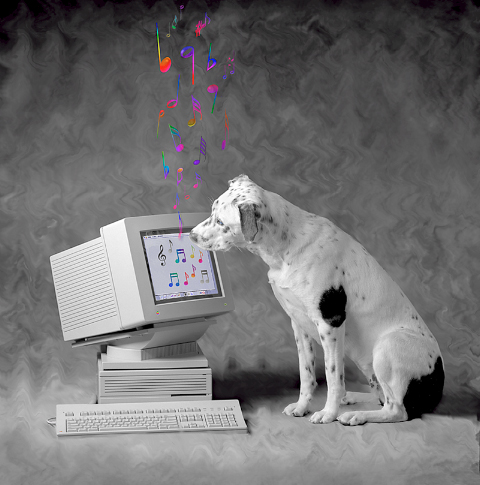Eventually you knew it was coming – the subject of color management. Now before you mosey along, or your eyes glaze over, rest assured, this is not going to be the typical discussion of color management. I am not going to talk about LAB color vs CMYK, vs RGB, or anything like that. And even though the term “colorimeter” may sound like something Marvin the Martian was going to use to destroy Earth in the classic Bugs Bunny cartoon (that was the Illudium Q-36 Explosive Space Modulator), there is nothing overly scientific in today’s post.
Well, that’s not entirely true – it is scientific, but I certainly will not portray to understand any of that. Instead, I am going to show you how easy it is to calibrate your monitor using this device. Now I am looking specifically at the one from X-Rite (I own the Gretag Macbeth version from before X-Rite bought them), but color management has become as easy as a couple of mouse-clicks these days. So, you don’t have to know anything about color gamuts, RGB, CMYK, LAB, or anything like that to know you are getting color accurate images. Check it out…
After installing the software from the CD, simply connect the device and start the software. The device is the colorimeter (also known as a calibrator in some circles), and it is shaped like a computer mouse or a hockey puck. It has a cable that connects it to your computer via USB, and is good for either CRT, LCD, or laptop displays. Additional software components also enable you to calibrate things like projectors, scanners, and much more. Here though, I’ll be showing you how it works with a computer monitor.
Once the puck is connected and placed on the monitor, simply go through the wizard to calibrate everything from Contrast, to Brightness, and your RGB colors. It’s pretty straightforward…just open the display settings for your particular monitor type, and increase or decrease the values until the indicator is as close to center as you can get it. You’ll notice that I am calibrating a Dell computer monitor, and it is a Windows-based computer, but the process is just as simple on a Mac. (I just got my Windows notification though, so figured it’d be easier to kill 2 birds with one stone there.)
Here’s a couple of screen shots to give you an idea of the process. The first step when launching the software is to specify your white point and monitor type (if you are calibrating a laptop, pick the LCD). Next up, decide whether you want to go the easy route or the advanced route. I would recommend the advanced route, as even that is very easily accomplished, and these are the screen captures I am using here:

Next up is the screen capture of the contrast display. In the upper left, the software shows the current contrast setting compared to the desired setting. On the left is the colorimeter. The Brightness (or Luminance) window is pretty much the same layout, so I am not going to repeat the screen capture here.

Here’s a screen capture of the first stage in setting the color values for my Dell 19″ LCD. The software readout is on the upper right, the colorimeter is on the left, and dead center is the display menu for the Dell monitor.

Once your contrast, brightness, and color settings are defined for the monitor you are using, the software will run through and configure the graphics card, monitor, and display output settings.

Once all the settings are complete, a profile is creating in your system folder. For Windows, that is in the system32 folder. You can give it a specific name, and set the schedule on which you will be reminded for a new profile to be built anywhere between 1-4 weeks…more on this in a minute.

As you can see, it is as straightforward and simple as can be – even on the advanced settings where I defined the color (RGB) settings. So, why doesn’t everyone do this? Good question! This device cost me roughly $200, which is likely not cheap by average standards for equipment (especially that which cannot be attached to your camera!), but if you really want to get quality results, the price is minimal. I have mine set to update every 2 weeks (my LCD display has a tendency to shift colors easily, and LCD’s in general are known for color shift especially as they get warm and cool down when turned on and off.) The benefits are huge though as your prints will be more accurate whether you print at a lab or print at home. In the case of the former, no color correction is needed (and if you use MPIX Pro, there is no color correction done), and in the case of the latter, you will use less ink and paper in test runs before getting the results you want.
Keep in mind that this is just the procedure using the X-Rite, and I am sure others could just as easily recommend the Spyder Pro series, or some other colorimeter. With that in mind, if you have an inkling one way or another, feel free to share your own experiences in the comments. Which colorimeter do you use? Do you like it? Not so much? What do you like/dislike about the process?
Whether you like the X-Rite method though, or some other model – calibrating your monitor is an important part of working with a color managed work flow if you want to produce accurate and quality prints. After all, it is still about the print. Don’t forget to share your thoughts in the comments! Until tomorrow, happy shooting and we’ll see you then!



